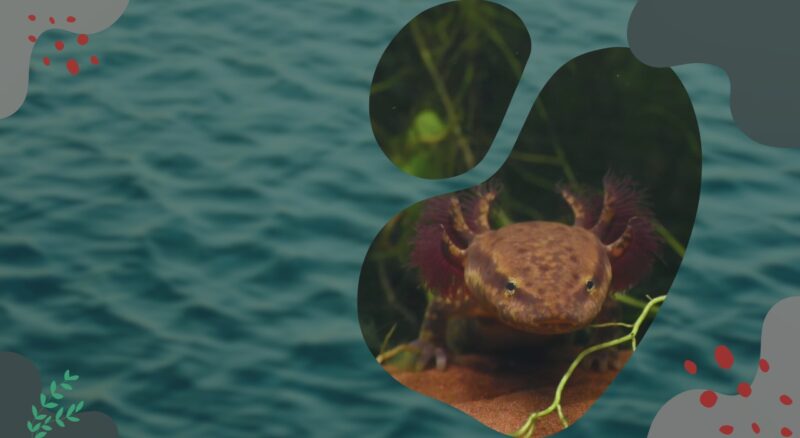Dive into the hidden depths of aquatic wonder as we unveil the captivating world of Mudpuppy (Necturus maculosus), extraordinary fully aquatic salamanders that reign supreme in the freshwater realms of North America. Bewitching and mysterious, these enigmatic creatures often bewilder the uninitiated, mistakenly perceived as aquatic phantoms masquerading as fish. Yet, in truth, they are a true marvel of the amphibian world, bearing a treasure trove of unique adaptations that set them apart from their terrestrial counterparts.
With each stroke of knowledge, this in-depth blog post is your passage to an exciting journey of discovery, where we’ll unearth 10 fascinating facts about Mudpuppies, their biology, behavior, and ecological significance. And to complement this enthralling adventure, we’ll sprinkle our narrative with captivating pictures, allowing you to immerse yourself fully into the wonder of these aquatic wonders. So, prepare to be enthralled as we unravel the secrets of these extraordinary amphibians!
1. Aquatic Enchantment
Mudpuppies are true aquatic beings, spending their entire lives in freshwater ecosystems. They prefer slow-moving bodies of water, such as lakes, ponds, rivers, and streams, where they can find shelter among rocks, logs, and aquatic vegetation. Their slender, streamlined bodies, webbed feet, and paddle-like tails make them adept swimmers, gracefully navigating through the water with ease.
2. Nature’s Aqua-Wonders
One of the most distinguishing features of Mudpuppies is their striking external gills. These bushy, red, or pink fronds on the sides of their heads serve a vital purpose: enabling them to respire underwater. Unlike many other amphibians that rely on internal lungs, Mudpuppies absorb oxygen directly from the water through their gills, a unique adaptation to their aquatic lifestyle.
3. Vibrant Watercolor Patterns
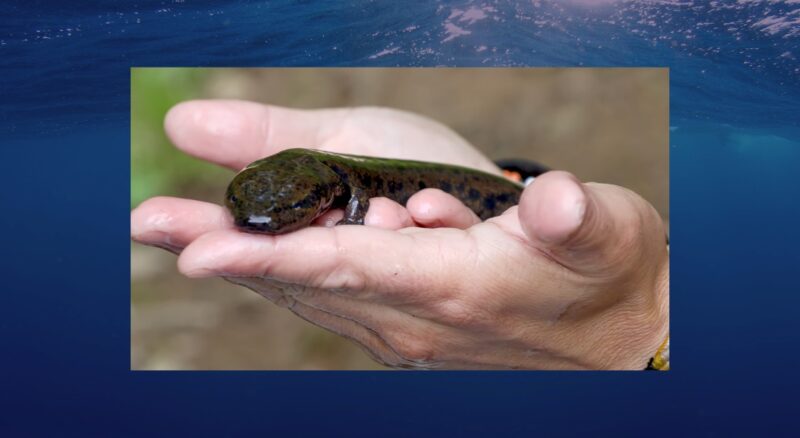
Mudpuppies possess a mesmerizing coloration that varies among individuals. Their base color ranges from dark brown to grayish-black, adorned with stunning spots and speckles of vibrant hues, including yellow, orange, and red. This striking pattern adds to their visual appeal and helps them blend into their aquatic surroundings.
4. Mudpuppies Are Nighttime Predators
As skilled nocturnal predators, Mudpuppies become active under the cover of darkness. With excellent night vision, they actively forage for food, preying on a wide array of aquatic organisms, including insects, small fish, crayfish, mollusks, and amphibian larvae. Their sharp teeth and strong jaws allow them to capture and consume their prey efficiently.
5. Timeless Waters
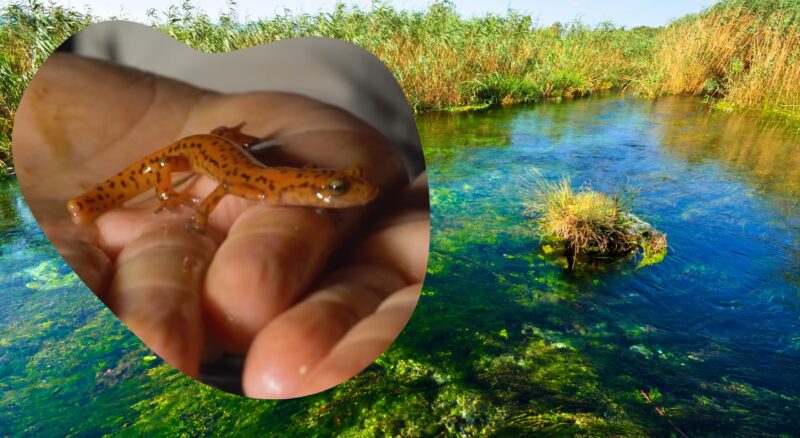
Unlike many other amphibians, Mudpuppies have surprisingly long lifespans, typically ranging from 10 to 20 years in the wild. Their extended life cycle contributes to their ecological significance, as they play essential roles in their freshwater ecosystems for extended periods.
6. Conservation Calling
While Mudpuppies are not currently classified as endangered, some regional populations face threats due to habitat loss, water pollution, and climate change. As environmental stewards, it’s crucial to prioritize conservation efforts to safeguard their habitats and ensure their continued presence in the wild.
| Conservation Status | Threat Level | Population Status | Primary Threats |
|---|---|---|---|
| Not Endangered | Some regional populations | Stable with concerns | – Habitat loss due to urbanization and agriculture |
| – Water pollution from agricultural runoff, industrial discharges, and sewage | |||
| – Climate change impacts on freshwater habitats and water quality |
7. Dances of the Depths
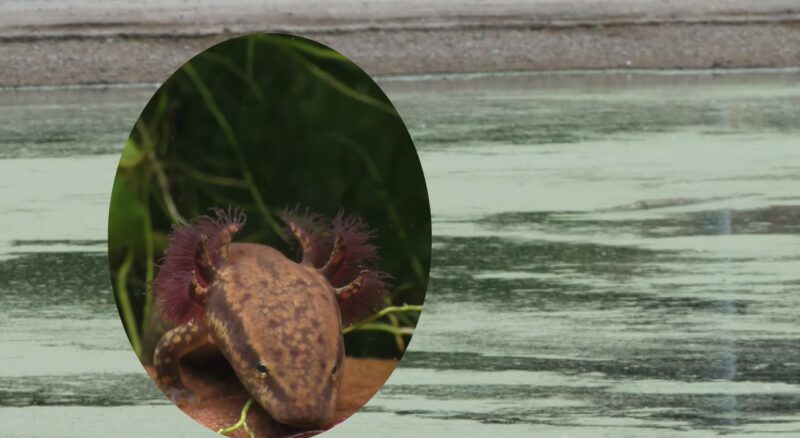
During the breeding season, which usually occurs in late winter or early spring, Mudpuppies engage in fascinating courtship rituals. Males perform elaborate dances to attract females, showcasing intricate movements and tactile communication. Once the female selects a suitable mate, she lays her eggs in submerged crevices, which the male then fertilizes.
8. Forever Young
After several weeks of careful guarding, the eggs hatch into aquatic larvae known as “efts”. Unlike most salamanders, which undergo metamorphosis, some Mudpuppies exhibit a phenomenon called neoteny. These individuals retain their aquatic larval characteristics, including external gills, even after reaching sexual maturity. Neotenic Mudpuppies continue to live in the water instead of transitioning to a fully terrestrial lifestyle.
9. Aquatic Architects
Mudpuppies occupy a crucial niche in freshwater ecosystems, balancing predator-prey relationships and influencing aquatic community dynamics. As predators, they help control the population of smaller aquatic organisms, ensuring ecological stability and promoting biodiversity.
10. Respectful Encounters
While Mudpuppies are generally docile and rarely bite humans, they possess mild toxins in their skin secretions, acting as a defense mechanism against potential predators. Therefore, it’s essential to handle them with care and avoid unnecessary disturbance in their natural habitats.
FAQs
Why are Mudpuppies sometimes mistaken for fish?
Mudpuppies have an entirely aquatic lifestyle, and their appearance can be fish-like due to their streamlined bodies, webbed feet, and paddle-like tails. Additionally, their external gills, which they use to breathe underwater, further contribute to the fish-like appearance.
Are Mudpuppies endangered?
As of now, Mudpuppies are not classified as endangered. However, certain regional populations face threats due to habitat loss, water pollution, and climate change. Conservation efforts are essential to protect their habitats and ensure their continued presence in the wild.
What do Mudpuppies eat?
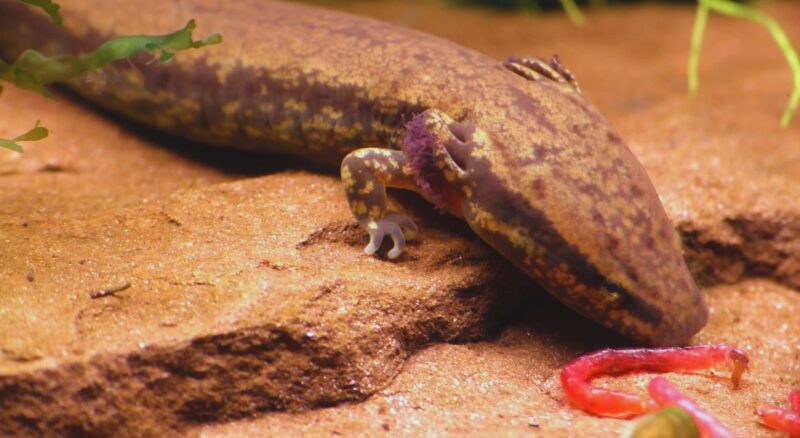
Mudpuppies are skilled nocturnal predators. They primarily feed on a variety of aquatic organisms, including insects, small fish, crayfish, mollusks, and amphibian larvae. Their sharp teeth and strong jaws help them capture and consume their prey effectively.
Do Mudpuppies have any unique adaptations?
Yes, Mudpuppies possess several fascinating adaptations. One of the most distinct features is their external gills, which allow them to respire underwater. Additionally, some Mudpuppies exhibit neoteny, retaining their larval characteristics, including external gills, even after reaching sexual maturity.
How long do Mudpuppies live?
Mudpuppies have relatively long lifespans compared to other amphibians, typically ranging from 10 to 20 years in the wild.
Can Mudpuppies be kept as pets?
While some people may find Mudpuppies intriguing and consider keeping them as pets, it’s essential to note that they are wild animals. Keeping them as pets requires expertise in amphibian care and adherence to local regulations. It’s generally best to appreciate them in their natural habitat or visit reputable zoos and educational centers.
Are Mudpuppies harmful to humans?
Mudpuppies are generally docile and rarely bite humans. However, they possess mild toxins in their skin secretions, which act as a defense mechanism against potential predators. Handling them with care and respect for their natural environment is essential.
How do Mudpuppies reproduce?
During the breeding season, which typically occurs in late winter or early spring, Mudpuppies engage in courtship rituals. Males perform elaborate dances to attract females, and once a suitable mate is selected, the female lays her eggs in submerged crevices, which the male then fertilizes.
What role do Mudpuppies play in their ecosystems?
Mudpuppies occupy a crucial niche in freshwater ecosystems, serving as both predators and prey. By controlling the population of smaller aquatic organisms, they help maintain ecological balance and promote biodiversity in their habitats.
Conclusion
As we conclude our journey through the intriguing world of Mudpuppies, we gain a deeper appreciation for their unique adaptations, ecological significance, and mesmerizing beauty. These fascinating aquatic salamanders enrich our freshwater ecosystems, contributing to the delicate balance of nature. By fostering awareness and conservation efforts, we can ensure the continued existence of these captivating creatures and protect the fragile habitats they call home for generations to come.
Related Posts:
- 20 Facts About Redback Spiders - Pictures,…
- 10 Reticulated Python Facts, Pictures, Video & Information
- 7 Common Pet Monkeys: Important Facts & Pictures!
- 14 Most Common Animals in Panama - Biodiversity Spotlight
- Forest Animals – Pictures & Fun Facts On Animals…
- White-Lipped Tree Frog - Pictures, Videos and…


